In the world of ecommerce platforms, plugins, and shopping carts, there are a lot of technology options. WooCommerce for WordPress leads the way in terms of market share.
All of the various ecommerce platforms have their own pros and cons in terms of features, content management, and overall integration with your business.
Many of the benefits of WooCommerce come from the fact that it is a plugin for WordPress, which is also the most popular website platform technology in the world as well.
My website team utilizes WooCommerce with WordPress for the work we do for clients, and we continue to invest in our processes centered around that technology for digital marketing and driving sales for our clients’ businesses.
We’ve used it for over a decade, and while other popular platforms have emerged, we find that it has the flexibility and opportunities we need to implement the SEO tactics we need in alignment with our broader SEO strategies.
Why Does Any Of This Matter?
You may already be using WooCommerce or another ecommerce platform.
I’m all for whatever platform works best for you. There are definite SEO ceilings that you’ll hit in what you can do on different platforms.
WooCommerce will have ceilings, too, if you aren’t leveraging how you can set it up, how you handle your WordPress optimization as a whole, and how your overall SEO strategy is defined.
I hope that if you’re in WooCommerce or are deciding which platform to choose and have SEO in mind, this article will help you on that journey.
What Makes WooCommerce SEO Unique
WooCommerce SEO is unique because it is within WordPress. Much of what you’ll do to optimize a WooCommerce ecommerce site falls in line with what you’d do for a WordPress site overall.
Overall, SEO-friendly benefits of WooCommerce within WordPress out of the box or with light configuration include:
- Analytics: WooCommerce has extensive analytics and connects easily to Google Analytics, so you can blend first and third-party visitor data.
- Content: Easily mix WooCommerce’s ecommerce functionality with WordPress’ content management.
- Organization: Easily organize and manage product categories, tags, and attributes.
Best Practices
Most WooCommerce and WordPress best practices align with broader ecommerce SEO best practices.
That includes managing the technical, on-page, and off-page aspects of ecommerce SEO within an overall strategy and at a tactical level.
If you’re new to SEO or want to ensure you’re not missing anything, I recommend checking out SEJ’s SEO intro guide.
Getting Started
Before you optimize, you’ll want to ensure you’re ready.
I highly recommend working on developing your action plan and goals before you start.
Knowing your current performance and researching what keywords and topics you want to target are big parts of both.
WooCommerce Analytics
I recommend using Google Analytics (GA4) as your primary analytics data source and platform for WordPress.
Going deeper and specifically into ecommerce analytics that you can integrate into GA4 from WooCommerce, the GTM4WP plugin is a great way to get that data.
Don’t skip out on measuring the data you want and need from your site for your SEO and broader marketing goal tracking.
I recommend prioritizing data before you get deep into optimizing so you can capture baseline data to measure against if you don’t already have it in a good place.
Transactional Emails
Another foundational thing you’ll want to do is set up transactional emails. Several email platforms integrate with WordPress and WooCommerce.
A favorite of my team’s for ease of use and doing the job well is Mailchimp’s transactional email functionality.
It was formerly called Mandrill and can handle post-purchase email communications like order and shipping confirmations.
Mailchimp can also be used to create automated email campaigns based on customer journey or shopping behavior, such as cart abandonment emails, win back, etc.
Functionality like this is essential to get the most out of our SEO investment, and for traffic, you work hard to drive to the site and into the shopping cart.
Keyword Research
Knowing what words, phrases, topics, and terms are related to the subject matter you want to rank for is critical. Beyond that, validate that people searching for those topics are your potential desired audience.
There are many great third-party audience and keyword research tools like Semrush, Moz, and Ahrefs.
They are paid tools with varying subscription levels but are leaders. They have their respective strengths in helping you research topics that align with your content, products, and categories and dive deep into the right targets for your SEO plan.
Build your lists, map them out to your content, and use them as context as you work through the optimization best practices to follow.
Technical SEO
Like with any site, and to follow broader UX best practices, you want your site to load quickly, be indexable, and not have anything holding it back.
Several specific technical factors you need to consider, configure, and monitor can hold back or unlock your opportunity for rankings compared to peer sites.
Indexing
It is essential to have your content found.
That starts by ensuring you have a clean XML sitemap and robots.txt file. Plus, go into Google Search Console, Bing Webmaster Tools, and third-party validation tools to ensure everything is as intended.
Use the Yoast plugin (or similar) to adjust settings for your XML sitemap and robots.txt files.
Yoast is great at giving you options to include or remove from those files, so you don’t have to touch the code or manually adjust those files at all. You can get the settings to your liking and then submit them for validation through the Console/Webmaster Tools.
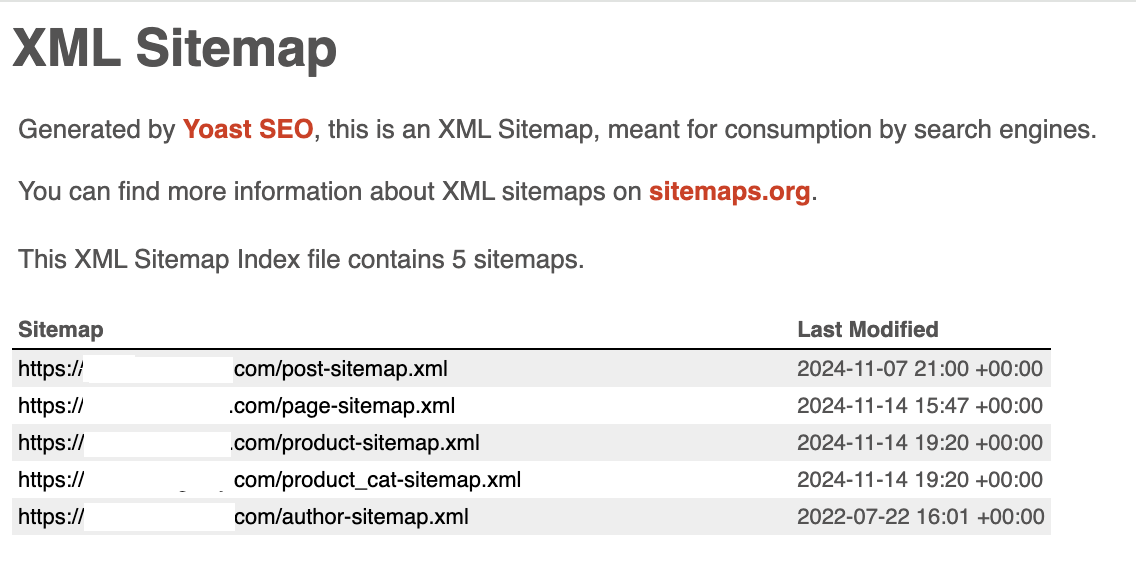 Image from author, November 2024
Image from author, November 2024Page Experience
There are a lot of data points and best practices on page load times, site speed, and other factors that Google looks at for “page experience.”
Overall, you want to pay attention to core web vitals and page load times to ensure that you have fast-loading pages that don’t harm image quality and content richness for users.
The core web vitals include:
I strongly recommend getting familiar with these three aspects of core web vitals with SEJ’s guide.
Imagify and WP Rocket are recommended plugins for image optimization and caching to improve page load times and overall site performance.
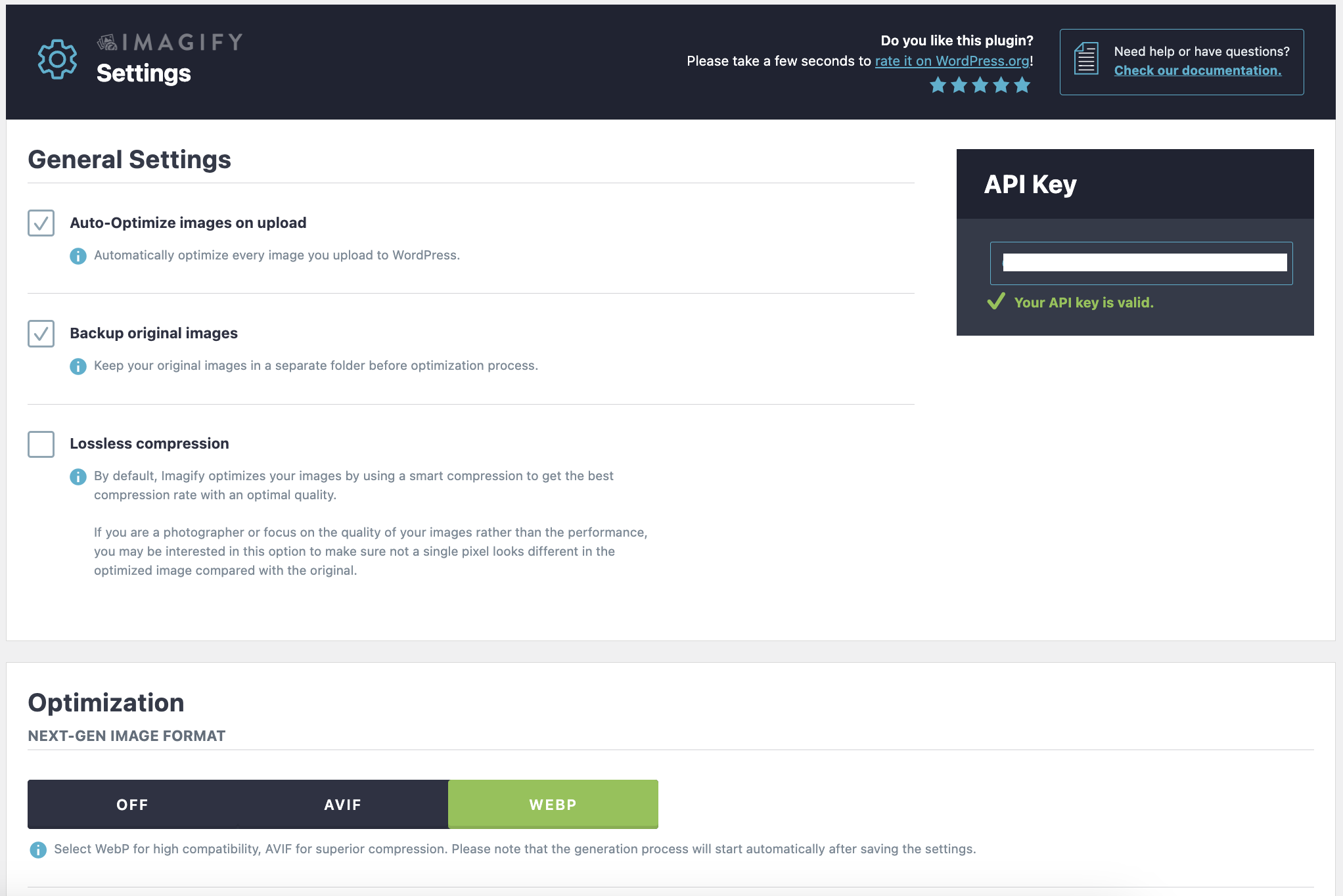 Screenshot from Imagify, November 2024
Screenshot from Imagify, November 2024Accessibility
Making your content accessible to all, including those with visual impairments, is important.
That includes coding to common ADA standards and ensuring that alt attributes and other cues are included.
Not a plugin recommendation here – I recommend using a third-party tool like PowerMapper.com to audit pages to get the helpful information you need to adjust page elements to meet the standard that your legal counsel advises (I’m not a lawyer).
Structured Data
Using extra context cues and opportunities to categorize, catalog, and mark up your subject matter is important. Leverage it where possible to get specific information for your industry, especially using specific product attributes.
Again, you can tap into the power of the Yoast plugin to add basic schema markup to pages on your site.
I recommend reading more about Schema and how it works before diving into the implementation if it is a new concept.
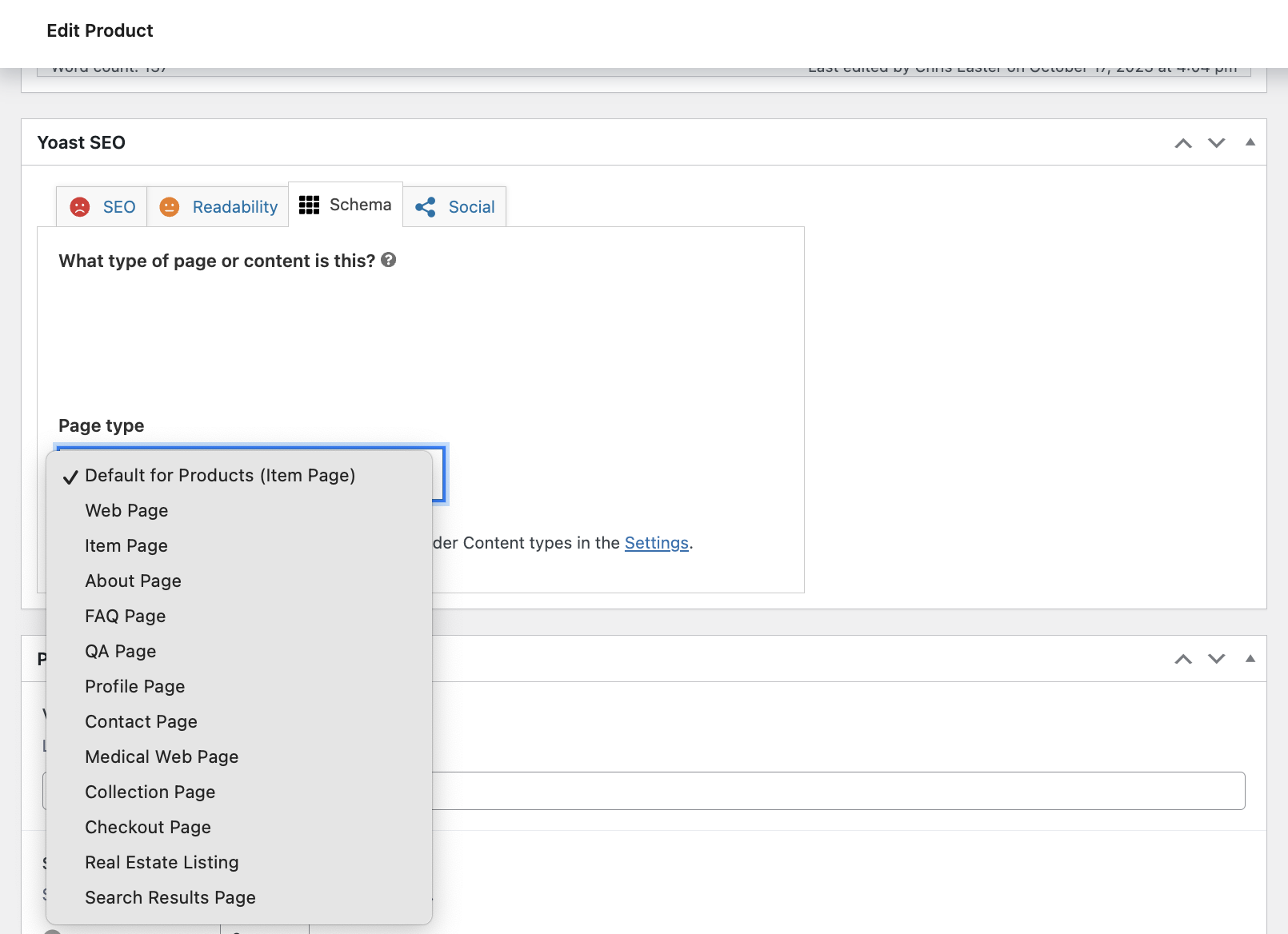 Screenshot from WordPress, November 2024
Screenshot from WordPress, November 2024Canonical URLs And Permalinks
Web stores inherently can have complexities and struggles with duplicate content.
Whether you have a product that appears in multiple categories or are just dealing with the “out of the box” way that WordPress and WooCommerce generate many separate URLs for a single page, you need to include a single “canonical” version for the search engines to index, show in the search results, and aggregate all link value to.
I recommend Yoast here again for handling canonicals.
I also recommend the Redirection plugin if you have pages that move, discontinued products, or need to permanently 301 redirect a specific page to another.
Be mindful of how you use canonicals and redirects, and always validate with tools like Screaming Frog or other lightweight redirect testing tools.
You want to avoid conflicts between multiple plugins that can send the wrong signal to the search engines or provide a bad experience for your users (sending to 404s, redirect loops, etc.).
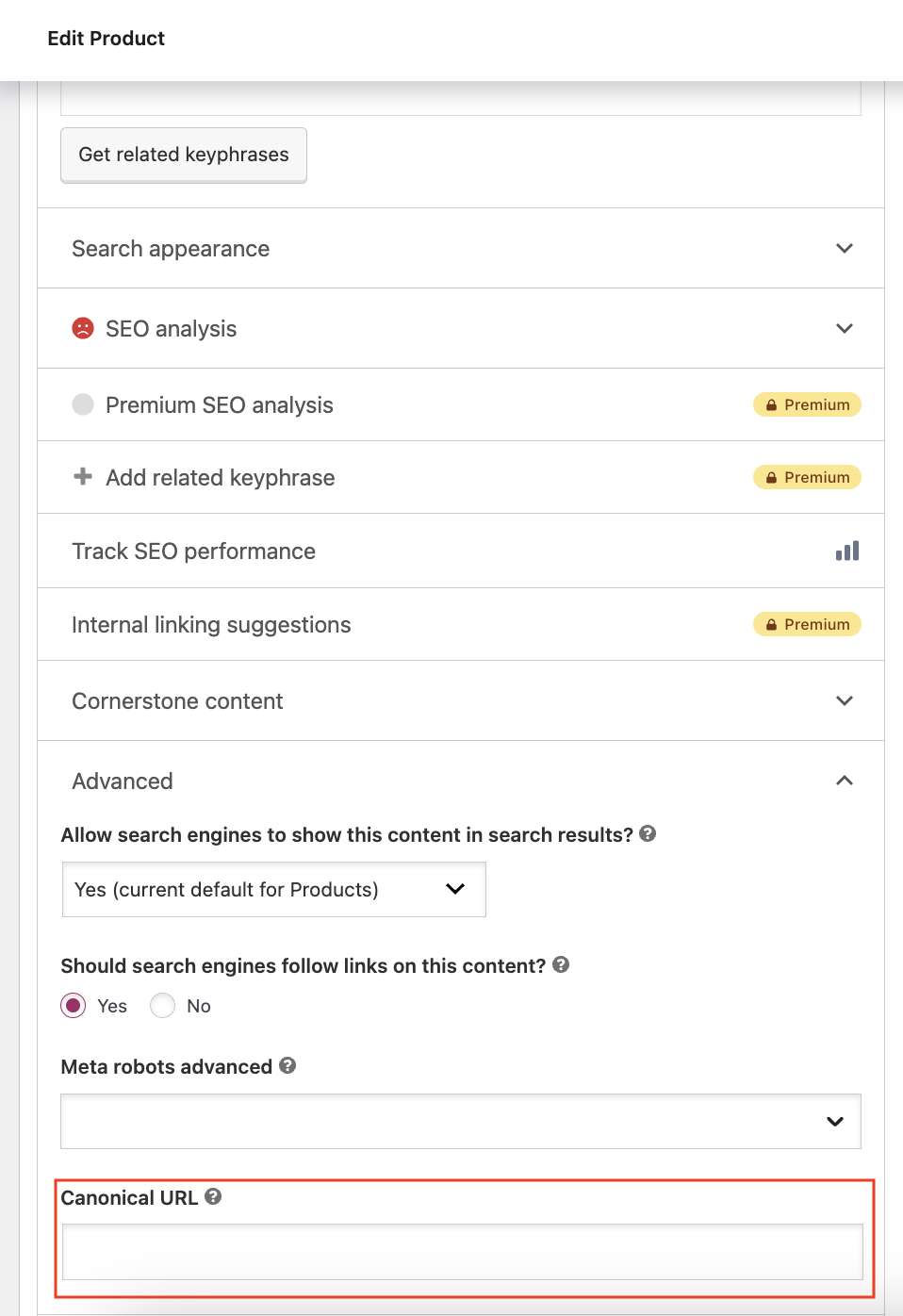 Screenshot from WordPress, November 2024
Screenshot from WordPress, November 2024Breadcrumbs
Breadcrumbs are links on interior pages that show a user (as well as a search engine) where they are on a site in terms of the navigational path or depth.
They allow users to see how far they are drilled down into a specific product category, blog category, or other interior section and a way to click to go back upstream.
They are typically coded into your WordPress site theme as a default element. The Yoast plugin is great for adding schema markup to them for WordPress/WooCommerce.
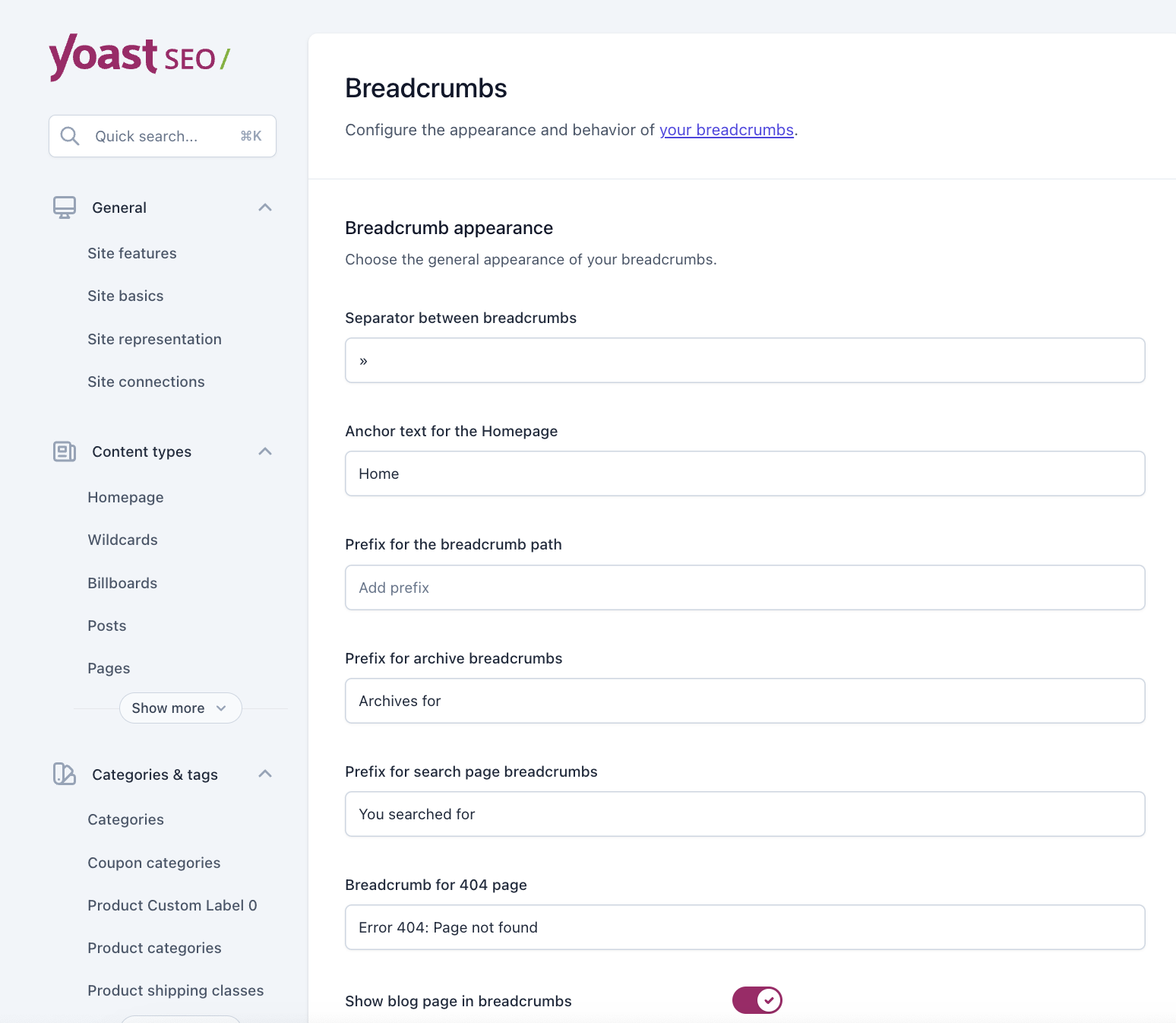 Screenshot from WordPress, November 2024
Screenshot from WordPress, November 2024On-Page SEO
On-page ranking factors and SEO aspects for ecommerce SEO that you’ll want to have covered in your WooCommerce site include:
URLs
Beyond the technical aspects of implementing canonical tags and trying to manage duplicate content to get the search engines to index and rank a single version of your pages – including categories and products – you don’t want to miss the opportunity to include important contextual keywords in your URLs.
Use WordPress’ native page naming conventions and tools to put meaningful keywords (without going overboard or stuffing) into the URL string.
Tags
Like any SEO plan, you’ll want to have an optimized custom title, meta description, and heading tags on each page.
Like any large or enterprise site, if you have many products, find ways to scale tag creation with data-driven content where possible.
Use Yoast to create custom titles and meta descriptions on each page.
Much like copy and URLs, though, also look at how the defaults are set up to pull in dynamic elements and set any that you can use.
That way, you can build formulas for how the tags will be created that don’t require you to write custom tags for each page to reach your unique tags per page goals.
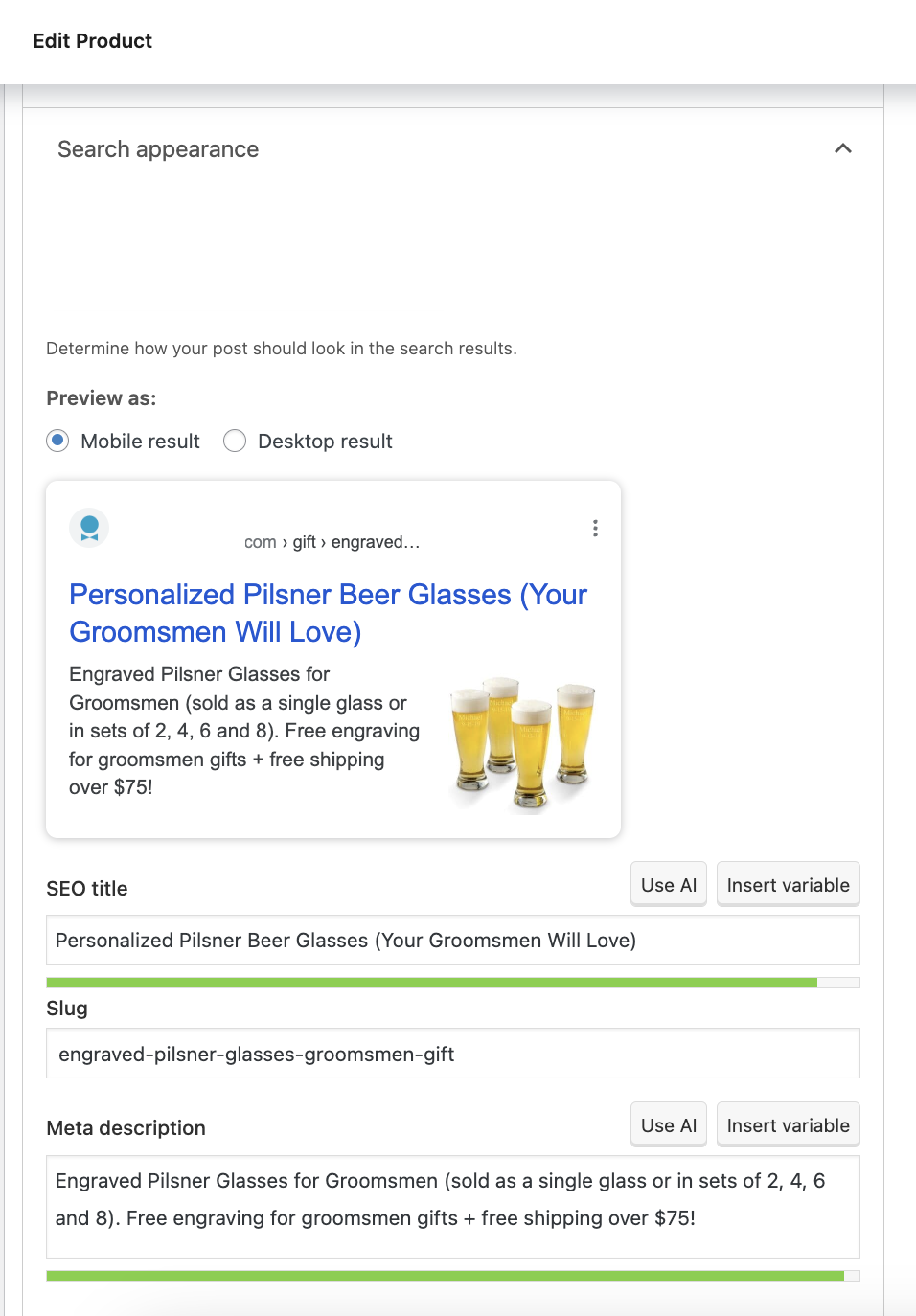 Screenshot from WordPress, November 2024
Screenshot from WordPress, November 2024 Copy
A unique, optimized copy can be a challenge for ecommerce sites.
Much like tags, you might have trouble doing it at scale. Or, you may have a lot of similar products.
Find ways to invest in the manual time to write to best practices, avoid duplicate content, and scale it programmatically where possible while maintaining high quality.
Images
Image file attributes are an area where you can include relevant, contextual keywords describing the image’s subject matter.
This is important for product images, product category-level images, and any content on your site.
They are important in terms of meeting accessibility standards – and also, to the search engines – to understand the context of an image.
Manage these in the media center in WordPress at upload or later by editing images through the media tab or going into the page and clicking on the image to review and edit properties.
 Screenshot from WordPress, November 2024
Screenshot from WordPress, November 2024Product Reviews
User-generated, unique content can help add contextual copy, supplementing the copy on a product page.
Added context and another type of potential schema element can be added to product reviews.
My team leverages and recommends the stamped.io plugin for easy management and implementation of reviews.
However, many great review management plugins are available, and they vary in cost, implementation ease, and complexity.
As a bonus, Stamped will also send out post-purchase requests for reviews.
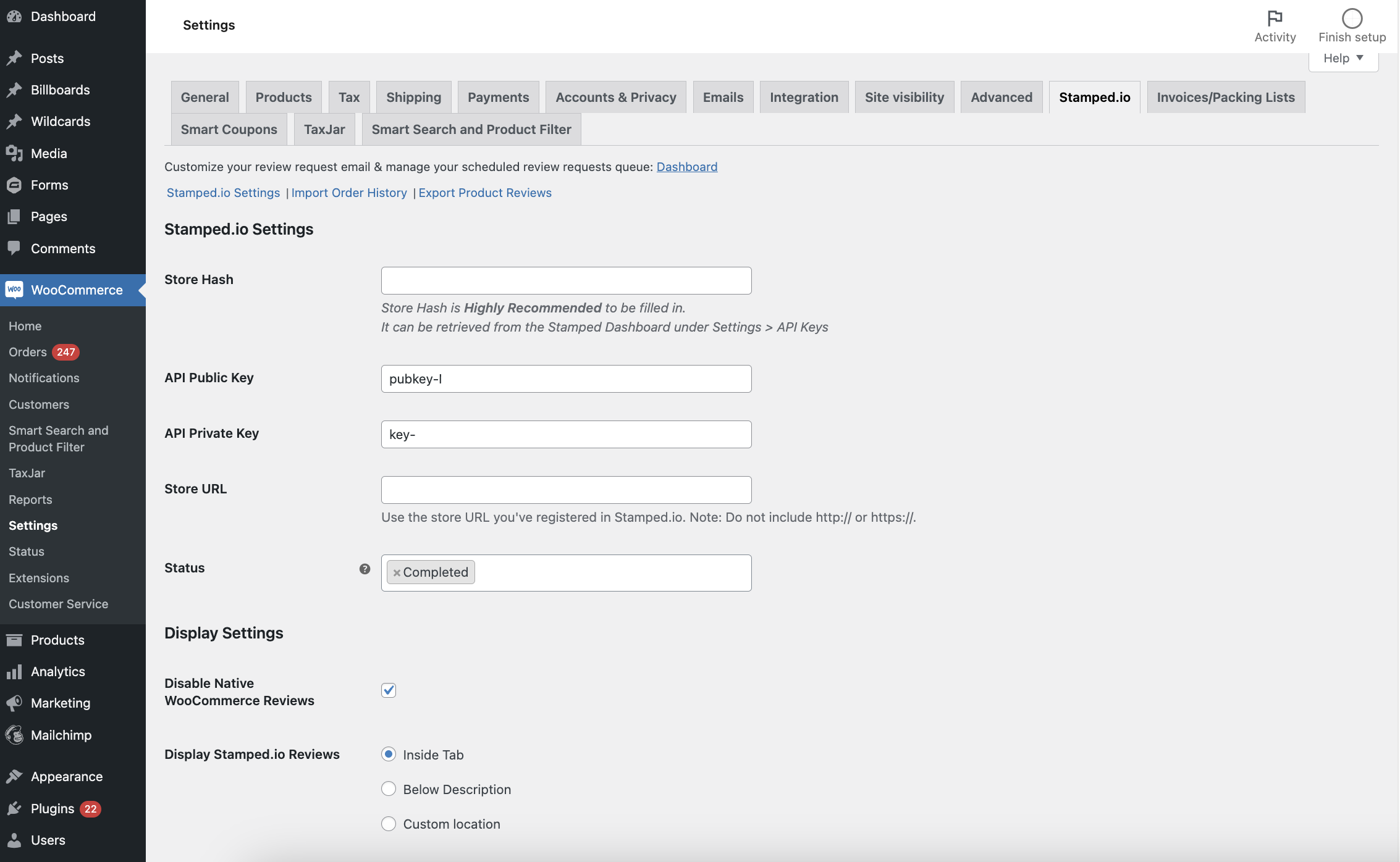 Screenshot from WordPress, November 2024
Screenshot from WordPress, November 2024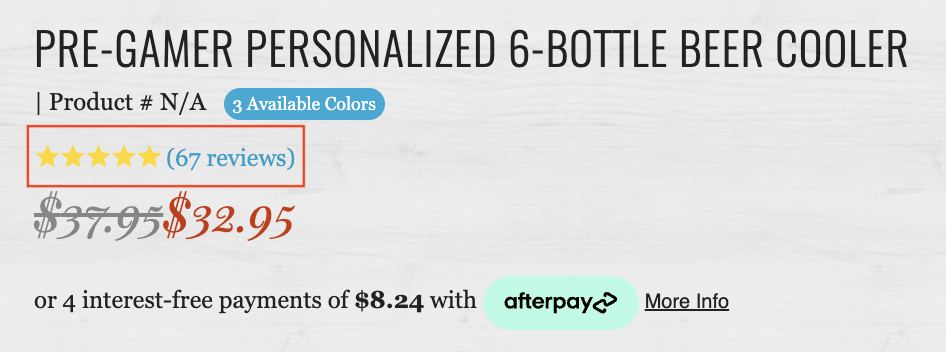 Screenshot from WordPress, November 2024
Screenshot from WordPress, November 2024Off-Page SEO
Ecommerce SEO, like most SEO, requires off-page factors to build upon your technical and on-page/content-focused tactics.
These factors are more general and least tied specifically to WooCommerce, but shouldn’t be left out of your SEO plan:
Links
Seek high-quality, industry/context-relevant inbound links to your products, categories, and content.
That includes natural associations like manufacturers, partners, affiliates, PR-related mentions, and other quality natural sources.
Social Media
Sure, there’s debate on whether it is a direct ranking factor.
Regardless, link to your site from social media content to build context and connections and seek out areas of opportunity across the social media landscape to gain links and mentions.
Engagement
Seek out other opportunities for engagement and mentions online.
Whether part of a PR plan, influencer strategy, or other ways your brand gets mentioned, leverage them.
Seek them out, and look for high-quality content to reference yours.
Popular SEO Plugins For WooCommerce
You can boost WooCommerce with other WordPress plugins, many of which are free.
Here’s a recap of the plugins I noted that are related to individual items you’ll want to optimize.
My team’s recommended WordPress plugins to use with WooCommerce (and in many cases in general for WordPress) SEO include:
- Yoast: SEO plugin that will create an editable sitemap and robots.txt files, help you change product metadata from product pages, add basic schema, handle canonicalization, breadcrumbs, etc.
- Imagify: For image optimization for page load time and site speed optimization.
- WP Rocket: For caching to improve site performance.
- Redirection: For creating any 301 redirects you need as part of an SEO strategy.
- Stamped.io (Or similar service): For managing customer product reviews.
- GTM4WP: Allowing you to implement enhanced ecommerce tracking for Google Analytics.
The great thing, for the most part, about these plugins is that if you have some WordPress experience, you may not need a developer to set them up.
Like any plugin, your WordPress infrastructure might impact your access level and any custom aspects required to implement depending on how they interact with other plugins or functionality.
Wrapping Up
At this point, it is probably pretty clear that a lot of the great things about SEO that we can manage in WordPress also translate over to WooCommerce.
And more broadly, you can implement ecommerce SEO best practices in WooCommerce as a whole.
I made it clear that my team uses WordPress and WooCommerce pretty exclusively right now.
We have had plenty of experiences with Magento, Shopify, and other platforms that left us frustrated as there were things locked down that we couldn’t control or optimize.
Or, as an admin or user, we weren’t able to edit content and manage the site as efficiently as we could with the more user-friendly controls within WordPress.
I’m not saying the other platforms aren’t right for you and your business. I would put each of them through an honest test before you create a new store or consider re-platforming.
There are definitely pros and cons to any platform, and my goal is for you to find the right one. If it is WooCommerce, great – and happy optimizing with the information I shared in this guide!
More resources:
- 29 Must-Have Features For Ecommerce Websites
- The 10 Best Website Builders To Consider 2024
- SEO Tools For Agencies
Featured Image: earth phakphum/Shutterstock





